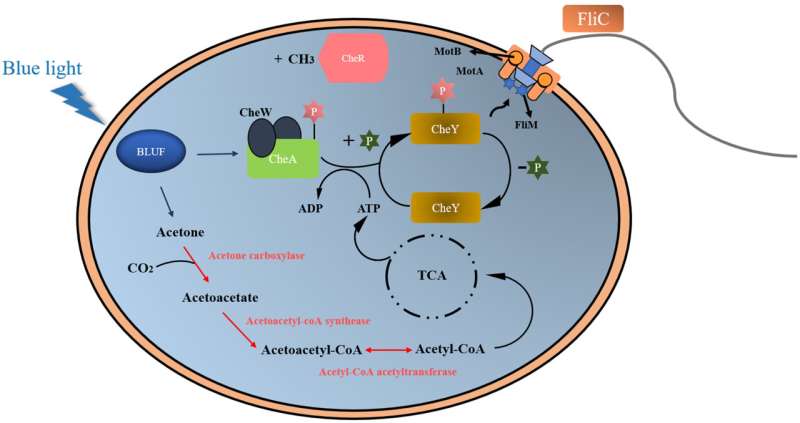Researchers discover how deep-sea bacteria sense blue light

As a ubiquitous energy source and environmental signal, light affects the lifestyle of organisms living in the photiczone.
Different forms of geoluminescence or bioluminescence exist not only in hydrothermal areas but also in other deep-sea habitats such as cold seeps. However, the responses of deep-sea microbes to light are largely unknown, even though blue light is proposed to be distributed in the deep ocean.
Recently, a research team led by Prof. Sun Chaomin from the Institute of Oceanology of the Chinese Academy of Sciences (IOCAS) unveiled the blue-light sensing mechanism of non-photosynthetic bacteria isolated from deep-sea cold seep.
The study was published in mSystems on Feb. 1.
Based on the sediment samples collected by "Kexue" from the cold seep in the South China Sea, the researchers isolated a novel bacterial species named Spongiibacter nanhainus CSC3.9 by a blue light-induction approach.
Compared with other wavelengths of light, the blue light (470nm) irradiation could significantly promote the growth of strain CSC3.9. However, the strain CSC3.9 did not possess genes encoding chlorophyll synthesis or rhodopsin, suggesting that strain CSC3.9 is not photosynthetic.
Proteomic results showed that blue light using flavin-adenine dinucleotide (FAD), or BLUF, a kind of typical blue light photoreceptor, plays an important role in the blue light sensing process.
The researchers knocked out the gene encoding BLUF and found that the ability of BLUF to sense blue light was significantly reduced, which further verified the proteomic results. Consistent with the results of in vivo experiments, the BLUF protein expressed in vitro also showed specific blue light sensing activity.
The above results comprehensively confirmed that blue light sensing protein BLUF mediates blue light perception of deep-sea bacteria and further activates acetyl-CoA synthesis pathway, which significantly enhances the tricarboxylic acid cycle (TCA) pathway to energy generation, and ultimately promotes the rapid growth of bacterial strains.
"Notably, homologs of BLUF widely exist across the marine microorganisms derived from different environments including cold seeps. This indicates that the distribution of light utilization by the non-phototrophic bacteria living in the ocean is broad and has been substantially underestimated," said Prof. Sun.
Thus, the contribution of microbial-mediated light energy metabolism to the energy cycle of deep-sea ecosystems should be considered in future studies.
More information: Yeqi Shan et al, A Deep-Sea Bacterium Senses Blue Light via a BLUF-Dependent Pathway, mSystems (2022). DOI: 10.1128/msystems.01279-21
Provided by Chinese Academy of Sciences





















